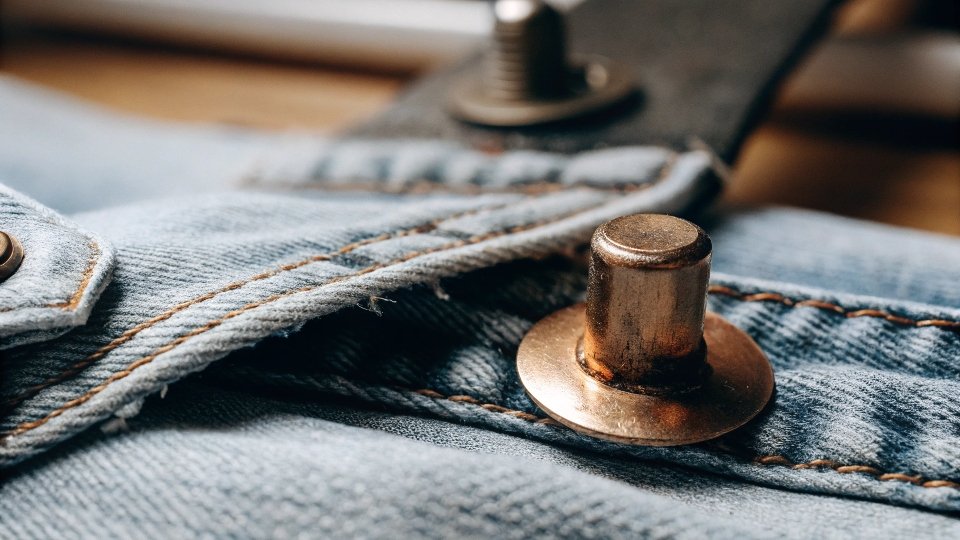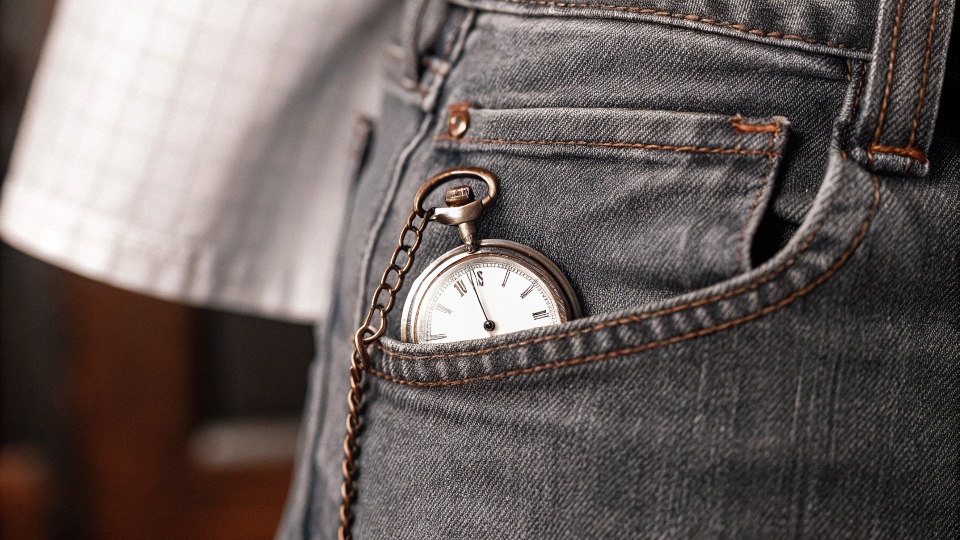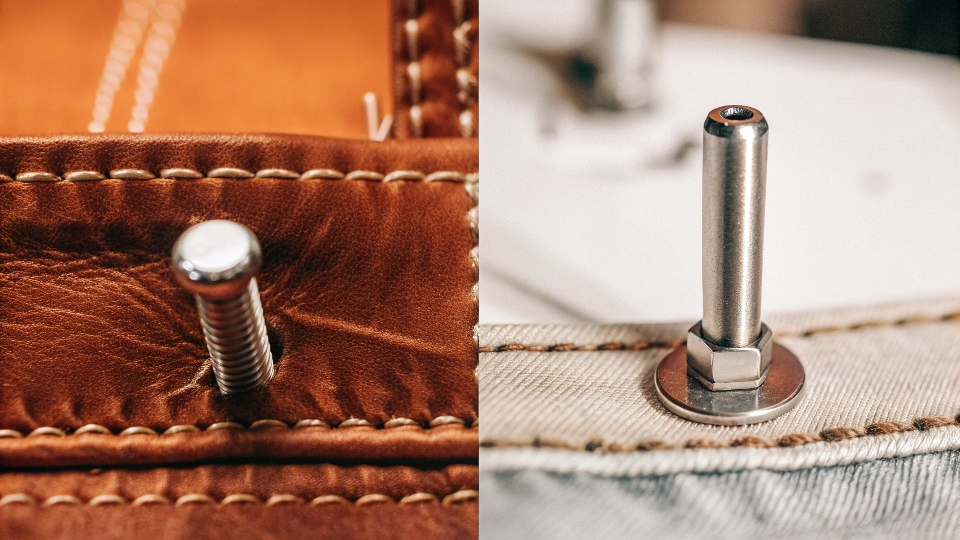You see those little metal studs on your jeans pockets every day. You probably never think about them. Are they just for decoration, or do they actually do something?
Pocket rivets1 were originally necessary to reinforce the seams2 on miners' work pants and prevent tearing. Today, their role is more about tradition and design, as modern stitching is strong enough for most jeans.
In my two decades of making jeans, I've handled millions of these tiny pieces of metal. The story of the rivet is the story of the jean itself.
It was an invention born from a real-world problem: workers' pants were falling apart. It was a functional fix that became a fashion icon. Let's dig into why it was invented, what it does now, and why it's still around after all these years.
Why Do Jeans Pockets Have Rivets?
You're pulling keys out of your pocket and notice that little copper stud. It seems like a random piece of hardware on a piece of clothing. Why is it there?
Rivets were added to jeans in 1873 to solve a major problem for miners and laborers. The constant stress from tools and heavy items in their pockets would tear the seams, so rivets were added to reinforce these weak points.
The story starts with a tailor named Jacob Davis. His customers were miners, railroad workers, and farmers. They kept coming back to him with the same complaint: the pockets on their pants kept ripping at the corners.
They would stuff them with tools, rocks, or other heavy supplies, and the seams just couldn't handle the strain. He needed a way to make them stronger. He got the idea from the metal rivets used on horse blankets and decided to hammer them onto the pocket corners. It worked perfectly.
He knew he had a big idea, so he wrote to his fabric supplier, Levi Strauss, to partner on a patent. This small piece of metal wasn't a fashion choice; it was a purely functional innovation that made the pants almost indestructible. This durability is what built the entire reputation of jeans as tough, reliable workwear.
What Is the Point of the Little Pocket on Jeans?
Tucked inside your main front pocket is another, tiny pocket. It's too small for a phone, and maybe even for most coins. What was it ever designed to hold?
That small pocket is officially called the "watch pocket3." It was originally designed in the late 1800s for cowboys and railroad workers to safely store their pocket watches, which were common at the time.
In the 19th century, a pocket watch was a valuable and necessary tool. Men needed to keep time, but the watches were also delicate.
The main pockets of their pants were filled with tools, coins, and their hands, making it a dangerous place for a fragile watch. So, the designers added a small, snug pocket to hold the watch securely where it wouldn't get scratched, broken, or fall out.
As wristwatches became popular, the pocket watch lost its purpose. But the little pocket itself remained as a key part of the classic "5-pocket jean" design. Today, its function is gone, but it serves as a nod to the garment's history.
People might use it for small things like a guitar pick, a single key, or lip balm, but its main job is to honor the heritage of the pants. It's a feature that became a tradition.
Are Rivets Necessary Today?
Our clothes aren't put through the same stress as a 19th-century miner's. So with modern sewing technology, do we still actually need these little metal studs?
For most modern fashion jeans, rivets are not functionally necessary. Advanced stitching techniques like bar tacks4 provide sufficient reinforcement for everyday use. However, they remain an iconic design feature and a nod to denim's heritage5.
In my factory, we have several ways to make a seam strong. The most common modern replacement for a rivet is the bar tack. A bar tack is a tight, dense series of stitches that locks a stress point in place.
For the vast majority of jeans people wear, especially lightweight or stretch styles, a bar tack is more than strong enough. It is also cheaper, faster to apply, and more flexible than a metal rivet.
So why do we still use rivets? Their role has shifted from pure function to tradition. They are a powerful visual cue that tells you "this is an authentic jean6." They connect the pair you're wearing today to the original pairs worn over 150 years ago. For very heavy-duty workwear7 or heavyweight raw denim, a rivet does still offer an extra level of reinforcement. But the best proof of their changed role is on the back pockets.
Levi's used to put rivets there, but customers complained they scratched saddles and furniture. They were replaced with bar tacks, showing that when function truly clashes with tradition, the modern solution often wins.
Conclusion
Rivets were once essential for making work pants durable. Today, they are mostly a tribute to that history, a classic design detail that connects modern jeans to their tough, functional origins.
-
Discover the historical significance and practical uses of pocket rivets in jeans, a key element of denim design. ↩
-
Learn how rivets enhance the durability of jeans by reinforcing seams, a crucial aspect of their design. ↩
-
Uncover the original purpose of the watch pocket in jeans and its evolution over time. ↩
-
Find out about bar tacks, a modern alternative to rivets, and their advantages in jean construction. ↩
-
Delve into the cultural and historical significance of denim's heritage in contemporary fashion. ↩
-
Discover the elements that contribute to the authenticity of jeans, including the role of rivets. ↩
-
Learn about the characteristics of heavy-duty workwear jeans and the role of rivets in their design. ↩


[^3] wearing sturdy denim pants](https://diznewjeans.com/wp-content/uploads/2025/09/rivets-were-added-to-jeans-in-1873-to-solve-a-m.jpg)






